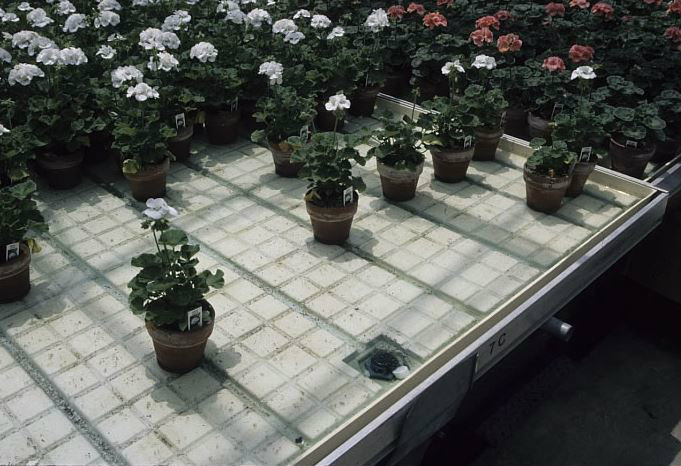Greenhouse Boom Irrigation Systems
Uniform watering is the one vital key to thriving plug and cell pack production. This cannot be achieved with hand watering or conventional overhead irrigation using nozzles with a circular pattern. Advances in boom irrigation technology give you a production tool that can be applied to your existing greenhouses or to new construction.
Types of Greenhouse Boom Irrigation Systems
A boom system is made out of one or more pipes with nozzles that apply water as the watering system moves over the vegetation. The boom system can be suspended from an overhead rail system. It can also be attached to a cart that goes down the aisle. A trailing hose supplies the water and gets its power from an electric supply cable or battery pack.
DIY Greenhouse Boom Irrigation Systems
Grower-built systems are the simplest. A tobacco farmer in Connecticut produced the first boom irrigation system. He constructed it by putting seedlings in cell trays. He used a lawnmower frame with a folding, double boom supported above the plants. The cart was guided down the center aisle by the arm riding on a pipe attached to the floor.
This cart was moved by an electric winch mounted on the cart. In operation, the winch cable was unwound and attached to a hook at the opposite end wall. When activated, the winch pulled the cart at an even speed from one end of the greenhouse to the other. A micro-switch halted the cart when it reached the end of the aisle.
This boom cart could be easily moved between greenhouses which was a substantial advantage. With the double boom, the first set of nozzles wet the surface with about one-third the necessary water, and the second set with larger nozzles gave a heavier application.
Hand-Pulled Greenhouse Boom Irrigation Systems
Boom irrigation systems that are hand-held consist of a boom supported by a frame with a trailing hose. These types of systems are popular and have been developed by several successful growers. They can be mounted to an overhead conveyor track system or supported on the ground with bicycle wheels. Although the operation is not as uniform as with a power unit, the savings in time and the more uniform watering offer some advantages.
Commercial Greenhouse Boom Irrigation
Commercial units run about $4,000. These units can be adapted to work in most gutter-connected and free-standing greenhouses. The widths available go up to 70 ft. For beds and benches 400 feet or less, they can be watered with only one setting. If you have several bays or greenhouses, look for systems that can be moved.
The commercial boom systems depend on a single or double rail attached to the greenhouse frame. This supports and guides the boom over the vegetation. Even though most boom systems weight under 200-pounds, the system still needs strong support for the trailing hose and attached rail.
Most booms are powered by a variable or fixed-speed gear motor. To allow the speed to vary, a fractional-horsepower DC motor is used by most manufacturers. For either thorough watering or a light mists, you can find rates of 25 to 250 ft per minute.
For excellent coverage, use cone-spray or fan nozzles. It's a best practice for uniform application to space the spray, so there is overlap in the pattern. A critical dimension to provide that overlap is the height of the nozzles above the plants. For additional water for plants near the aisles or sidewall, you may need more nozzles at the ends of the boom.
Adequate Water Flow is Paramount
As with any automatic watering system, adequate water supply is necessary. The wide selection of nozzle capacities available allows booms to be designed to fit most water supplies. Generally, 12” to 15” spacing is used with a nozzle capacity of from 0.1 to 0.8 gallons per minute.
Some systems will operate on water pressure as low as 15 psi, but generally, 40 to 50 psi is recommended for uniformity. To keep the nozzles from clogging, make sure your water is clean. The supply line should have at least one, possibly more filters. The mesh on the screen should be 150 to 200 to get rid of any particulate matter.
Some systems are available with more than one boom. These can be fitted with nozzles with different application rates for misting, feeding, pest control or growth regulator applications.
Methods of Control in Commercial Boom Irrigation
There several viable methods available to control boom systems. The most straightforward set up is to use a time clock or cycle timer that activates the drive unit at predetermined times.
More flexible systems use programmable controllers or microcomputers that allow
speed changes
skipping of empty bench areas
selection of boom sections to activate
multiple passes over the same area
Safety and reliability are addressed in several ways.
A variety of sensors may be employed to detect
bloom obstructions
mechanical problems
low water pressure
power failure
Advantages of Commercial Boom Irrigation
There are many additional advantages to a boom system besides greater uniformity of water application. Less water is needed because the system can be operated to provide the optimum amount of water for the crop. Less aisle space is needed for watering.
There are a large number of options. Because of that, careful selection of a boom system is required.
Factors affecting your choice include
the type and style of greenhouses
cropping system
water quantity
water quality and
the amount of automation you desire.
You should shop around to find a system that is most economical for your growing needs.
Get Your Free 15 Minute Consultation Today
Call 408-332-9635 or contact us online. The team at Voeks, Inc. is here to help you grow.







